Here is a list of the known reasons for aging, combining 12 of the best-supported1 with 6 additional emerging factors that are under investigation (and some ideas about what you can do to mitigate each):


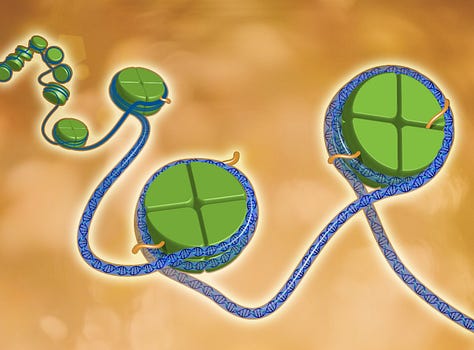
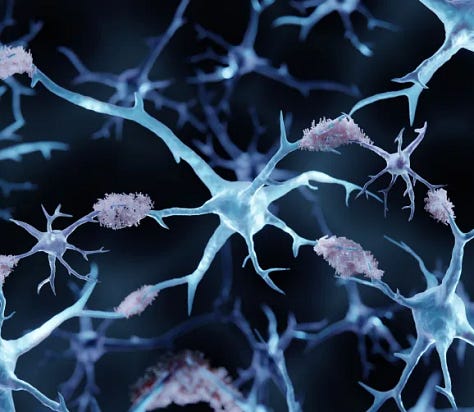
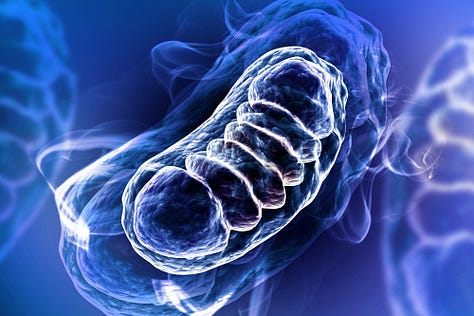

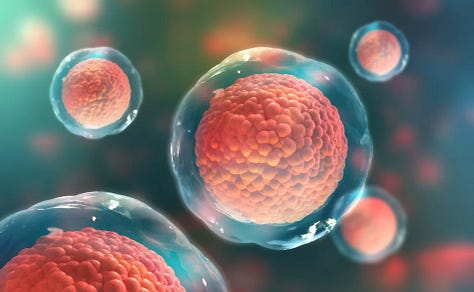


1. Genomic Instability
Accumulation of DNA damage over time, leading to mutations and loss of cellular function.2
What you can do:
Antioxidants: Vitamin E, Vitamin C, 345, CoQ10678, and polyphenols (e.g., resveratrol) may help reduce oxidative damage to DNA910.
DNA repair enhancers: NAD+ precursors (e.g., Nicotinamide Riboside, NMN) appear to promote DNA repair by boosting sirtuin activity.1112
Minimizing environmental toxins: Reduce exposure to pollutants, UV radiation, and avoid smoking.
2. Telomere Attrition
Progressive shortening of telomeres, limiting cellular division and contributing to aging.13
What you can do:
Telomerase activators: TA-65 and astragalus extract may help extend telomere length.
Exercise: Aerobic exercise and resistance training are shown to preserve telomere length.
Meditation: Mindfulness and stress-reducing activities can slow telomere shortening.
3. Epigenetic Alterations
Changes in gene expression without altering the DNA sequence, affecting aging-related gene regulation.14
What you can do:
Dietary modulation: Caloric restriction, fasting, and ketogenic diets influence epigenetic markers.
Sirtuin activators: Resveratrol, pterostilbene, and NAD+ precursors promote beneficial epigenetic modifications.
Exercise: Physical activity promotes beneficial changes in gene expression related to aging.
4. Loss of Proteostasis
Decline in the maintenance of properly folded proteins, leading to accumulation of damaged proteins.15
What you can do:
Heat shock proteins (HSP) activators: Sauna therapy or heat stress increases HSPs, which help repair misfolded proteins.
Autophagy boosters: Fasting and caloric restriction enhance autophagy, clearing damaged proteins.
Proteostasis enhancers: Curcumin and spermidine are shown to support proteostasis.
5. Mitochondrial Dysfunction
Reduced efficiency in mitochondrial energy production, causing cellular decline.16
What you can do:
Mitochondrial support supplements: CoQ10, PQQ, Alpha Lipoic Acid (ALA), and Acetyl-L-Carnitine.
NAD+ boosting: Supplementing with NAD+ precursors (e.g., Nicotinamide Riboside or NMN) to enhance mitochondrial function.
Exercise: High-Intensity Interval Training (HIIT) and aerobic exercise improve mitochondrial efficiency.
6. Cellular Senescence
Accumulation of cells that can no longer divide or function properly, promoting tissue dysfunction.17
What you can do:
Senolytics: Quercetin, Fisetin, and Dasatinib (used in research settings) can selectively clear senescent cells.
Exercise: Physical activity reduces senescent cell burden.
Fasting: Intermittent fasting and time-restricted eating may promote the clearance of senescent cells.
7. Stem Cell Exhaustion
Depletion of stem cells, reducing the body’s ability to regenerate tissues.18
What you can do:
Stem cell rejuvenation therapies: Mesenchymal stem cell infusions (experimental).
Fasting: Prolonged fasting may stimulate stem cell regeneration, especially in the immune system.
NAD+ precursors: Support stem cell maintenance through mitochondrial health.
8. Deregulated Nutrient Sensing
Impairment in nutrient-sensing pathways (e.g., mTOR, AMPK), contributing to metabolic dysregulation and aging.19
What you can do:
Caloric restriction: Proven in multiple species to enhance longevity by affecting nutrient-sensing pathways like mTOR and IGF-1.
Metformin: Reduces IGF-1 and mTOR signaling, shown to extend lifespan in animal models.
AMPK activators: Berberine and ALA activate AMPK, promoting longevity.
9. Altered Intercellular Communication
Disruption in the signaling between cells, leading to chronic inflammation and tissue degradation.20
What you can do:
Anti-inflammatory diet: Rich in omega-3 fatty acids (e.g., fish oil) and antioxidants reduces chronic inflammation.
Intermittent fasting: Reduces pro-inflammatory cytokine levels and promotes healthy intercellular signaling.
Senolytics: Quercetin and Fisetin may reduce the pro-inflammatory signaling from senescent cells.


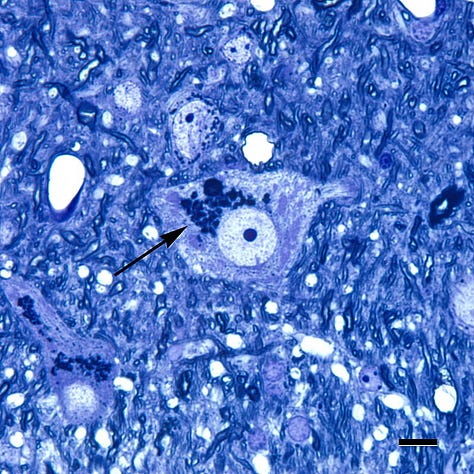
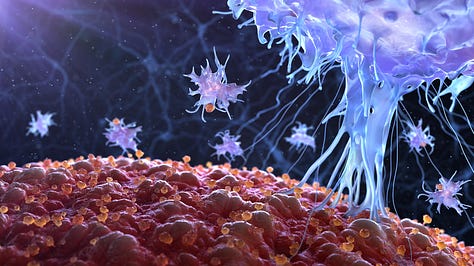

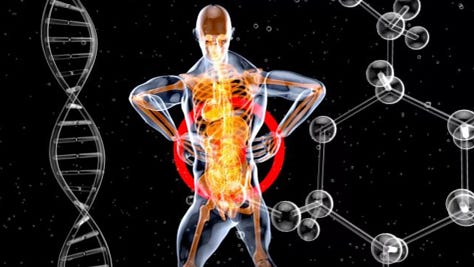
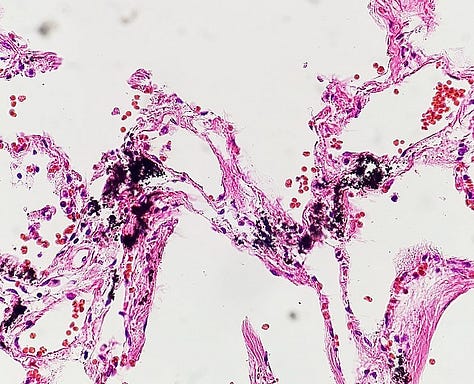
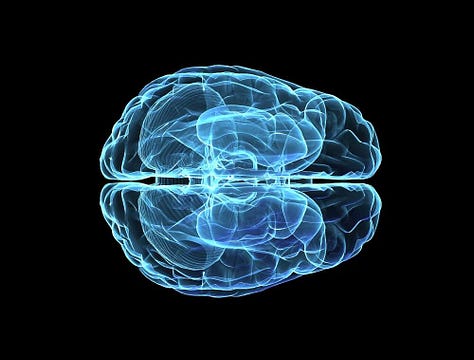
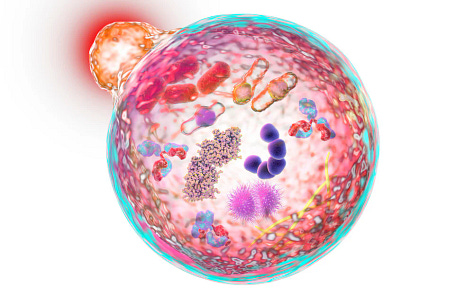
10. Disabled Macroautophagy
Impairment in the process of cellular clean-up, where damaged organelles and proteins are not properly removed.21
What you can do:
Fasting: Intermittent fasting and extended fasting strongly boost autophagy.
Rapamycin: Inhibits mTOR and enhances autophagy (currently used in research, not widely available).
Polyphenols: Resveratrol and spermidine have been shown to induce autophagy.
11. Chronic Inflammation (Inflammaging)
Persistent, low-grade inflammation that damages tissues and promotes age-related diseases.22
What you can do:
Omega-3 fatty acids: Fish oil supplements have potent anti-inflammatory effects.
Anti-inflammatory compounds: Curcumin, ginger, and green tea extract reduce inflammation.
Regular exercise: Physical activity reduces systemic inflammation markers.
12. Accumulation of Cellular Damage
Gradual accumulation of cellular damage from oxidative stress, radiation, and other metabolic by-products.23
What you can do:
Antioxidants: Supplementing with Vitamin C, E, glutathione, and alpha-lipoic acid can reduce oxidative damage.
Mitochondrial support: CoQ10, PQQ, and NAD+ precursors help combat oxidative stress.
Sauna therapy: Induces heat shock proteins, which repair cellular damage.
Emerging Factors:
13. Microbiome Alterations
Changes in the gut microbiota composition that influence systemic inflammation, immune response, and metabolism.24
What you can do:
Probiotics: Specific strains (e.g., Lactobacillus, Bifidobacterium) can improve gut health.
Prebiotics: Dietary fibers such as inulin and resistant starches support a healthy microbiome.
Diet: A plant-rich diet high in fiber and fermented foods improves microbiome diversity.
14. Circadian Rhythm Disruption
Disruptions in the body’s internal clock, affecting metabolic and immune processes, potentially accelerating aging.25
What you can do:
Consistent sleep schedule: Maintaining regular sleep-wake cycles is essential for circadian health.
Light exposure: Morning sunlight exposure supports healthy circadian rhythms.
Melatonin: Supplementation can help regulate sleep cycles and improve circadian rhythm alignment.
15. Immune System Dysregulation (Immunosenescence)
The weakening of the immune system with age, reducing the body’s ability to fight infections and control inflammation.26
What you can do:
Vitamin D: Supports immune function and helps regulate immune responses.
Zinc: Plays a crucial role in immune system regulation and may help combat immunosenescence.
Moderate exercise: Regular, moderate-intensity exercise boosts immune function and reduces inflammation.
16. Metabolic Waste Accumulation (e.g., Lipofuscin)
Accumulation of metabolic by-products such as lipofuscin, leading to impaired cellular function and tissue aging.27
What you can do:
Autophagy inducers: Fasting and caloric restriction help clear cellular debris and lipofuscin.
Spermidine: Promotes autophagy and may reduce metabolic waste accumulation.
Sauna therapy: Increases heat shock proteins, which can help clear cellular waste.
17. Glycation and Advanced Glycation End-Products (AGEs)
Formation of AGEs through the glycation of proteins and lipids, contributing to tissue damage and aging-related diseases.28
What you can do:
Low-glycemic diet: Reducing sugar and refined carbohydrates lowers AGEs in the body.
Alpha-lipoic acid (ALA): Shown to reduce glycation and AGE formation.
Carnosine: A supplement that can inhibit the formation of AGEs.
18. Caloric Overload and Nutrient Excess
Chronic over-nutrition contributing to metabolic overload, oxidative stress, and insulin resistance, which may accelerate aging.29
What you can do:
Caloric restriction: Proven to reduce metabolic overload and extend lifespan in animal studies.
Fasting: Periodic fasting reduces excess nutrient load and promotes metabolic flexibility.
Exercise: Regular physical activity helps balance energy metabolism and reduce excess nutrient storage.
This list represents a comprehensive view of the known biological mechanisms and emerging factors contributing to aging. While the first 12 are strongly established in empirical research, the final 6 are under ongoing investigation and may gain further support as our understanding of aging evolves (or may fall off the list). As significant new information becomes available, I expect to update and republish this post. So, stay tuned.
The Hallmarks of Aging - https://www.ncbi.nlm.nih.gov/pmc/articles/PMC3836174/
TL;DR: Aging is characterized by a progressive loss of physiological integrity, increasing vulnerability to diseases such as cancer, diabetes, and neurodegenerative disorders. This review outlines nine hallmarks of aging: genomic instability, telomere attrition, epigenetic alterations, loss of proteostasis, deregulated nutrient-sensing, mitochondrial dysfunction, cellular senescence, stem cell exhaustion, and altered intercellular communication. Understanding these interconnected hallmarks is crucial for identifying potential pharmaceutical targets to enhance human health and longevity while minimizing side effects.
Causes of genome instability: the effect of low dose chemical exposures in modern society - https://www.ncbi.nlm.nih.gov/pmc/articles/PMC4565613/
TL;DR: This review discusses how low-dose chemical exposures in modern society can lead to genome instability, which is a critical factor in cancer development. It highlights the role of various environmental chemicals—like heavy metals and bisphenol A (BPA)—that disrupt genomic integrity through mechanisms such as DNA damage, impaired DNA repair, and epigenetic modifications. Understanding these effects is essential for recognizing potential cancer risks associated with everyday chemical exposures.
Vitamin C for DNA damage prevention - https://www.sciencedirect.com/science/article/pii/S0027510711003150
TL;DR: Vitamin C acts as a crucial antioxidant that can reduce DNA damage, especially in individuals exposed to environmental stressors. Studies show that higher plasma levels of vitamin C (>50 µmol/l) correlate with decreased DNA adducts (segments of DNA bonded to cancer-causing chemicals), chromosomal aberrations, and oxidative damage. Vitamin C supplementation may enhance DNA repair mechanisms and lower the frequency of micronuclei in high-risk populations, including smokers and workers exposed to carcinogens. However, the effectiveness of supplementation is influenced by dietary intake, nutritional status, and specific environmental exposures.
Vitamin C Prevents DNA Mutation Induced by Oxidative Stress - https://www.sciencedirect.com/science/article/pii/S0021925819607398
TL;DR: This study investigates the protective role of vitamin C against oxidative DNA mutations. The researchers found that loading human kidney cells with vitamin C significantly reduced mutations induced by hydrogen peroxide (H2O2). Using a genetic system to quantify guanine base mutations, they demonstrated that high intracellular concentrations of vitamin C effectively prevented oxidative damage, as evidenced by a decrease in the formation of 8-oxo-dG (a marker of DNA damage). The findings suggest that vitamin C can help maintain genomic integrity under oxidative stress, particularly when glutathione levels are depleted (a condition that can occur due to factors like chronic illness, aging, and exposure to toxins).
Vitamin C supplementation decreases oxidative DNA damage in mononuclear blood cells of smokers - https://pubmed.ncbi.nlm.nih.gov/15309445/
TL;DR: The study found no significant changes in plasma vitamin E levels after ingestion of vitamin C, indicating that the antioxidant effects were primarily mediated by vitamin C itself. Long-term supplementation with 500 mg of vitamin C and 182 mg of vitamin E in smokers was associated with a reduction in oxidative DNA damage levels, suggesting that high-dose vitamin C may help mitigate oxidative stress in this population.
Coenzyme Q10 enrichment decreases oxidative DNA damage in human lymphocytes - https://www.sciencedirect.com/science/article/pii/S089158499900132X?via%3Dihub
TL;DR: This study investigates the protective effects of coenzyme Q10 (CoQ10) against oxidative DNA damage in human lymphocytes exposed to hydrogen peroxide (H2O2). Results showed that supplementation with the reduced form, ubiquinol-10, significantly decreased DNA strand breaks compared to control cells, enhancing cellular viability. The oxidized form, ubiquinone-10, also provided protection, although less effectively than ubiquinol-10. Notably, the study found that the antioxidant effects were primarily due to ubiquinol-10, as plasma vitamin E levels remained unchanged after supplementation. These findings suggest that CoQ10 can help mitigate oxidative DNA damage, supporting its potential role in cancer prevention.
Correlations between Oxidative DNA Damage, Oxidative Stress and Coenzyme Q10 in Patients with Coronary Artery Disease - https://www.medsci.org/v09p0621.htm
TL;DR: This study examines the relationship between oxidative DNA damage, oxidative stress, and coenzyme Q10 (CoQ10) levels in patients with coronary artery disease (CAD). The findings reveal that patients with CAD had significantly higher levels of 8-hydroxy-2’-deoxyguanosine (8-OHdG), a marker of oxidative DNA damage, and malondialdehyde (MDA), an indicator of lipid peroxidation, compared to healthy controls. Additionally, the ubiquinol-10/ubiquinone-10 ratio (a measure of antioxidant capacity) was significantly lower in CAD patients. The study concludes that oxidative stress and a disrupted pro-oxidant/antioxidant balance may contribute to the pathogenesis of CAD, suggesting that CoQ10 supplementation could have potential cardioprotective effects.
In vivo supplementation with coenzyme Q10 enhances the recovery of human lymphocytes from oxidative DNA damage - https://faseb.onlinelibrary.wiley.com/doi/pdf/10.1096/fj.00-0694fje
TL;DR: This study investigates the effects of coenzyme Q10 (CoQ10) supplementation on the recovery of human lymphocytes from oxidative DNA damage. Results indicate that in vivo supplementation with CoQ10 enhances the recovery of lymphocytes by inhibiting DNA strand break formation and accelerating repair kinetics. The study finds that the antioxidant effects of CoQ10 were significant, as supplementation increased cellular CoQ10 levels, improved DNA repair enzyme activity, and provided better protection against oxidative stress compared to control cells. Overall, CoQ10 supplementation may serve as a beneficial strategy for enhancing cellular defense against oxidative damage in lymphocytes.
Dietary Polyphenols and Their Role in Oxidative Stress-Induced Human Diseases: Insights Into Protective Effects, Antioxidant Potentials and Mechanism(s) of Action - https://www.ncbi.nlm.nih.gov/pmc/articles/PMC8882865/
TL;DR: Dietary polyphenols, abundant in fruits, vegetables, and beverages, possess significant antioxidant properties that protect against oxidative stress (OS) and its related diseases, including cancer, cardiovascular diseases, and neurodegenerative disorders. This review highlights the mechanisms by which polyphenols, such as flavonoids and phenolic acids, reduce oxidative cellular damage, inflammation, and disease incidence. Long-term consumption of polyphenol-rich diets is linked to decreased risks of chronic diseases, emphasizing their potential therapeutic roles in improving human health.
Polyphenols: Major regulators of key components of DNA damage response in cancer - https://www.sciencedirect.com/science/article/pii/S1568786419301788
TL;DR: This review highlights that polyphenols, prevalent in plant-based foods, play a significant role in regulating the DNA damage response (DDR) in cancer cells. They act as antioxidants, protecting against oxidative stress-induced DNA damage by neutralizing reactive oxygen species (ROS). The article details how polyphenols modulate various components of the DDR:
Sensors: These are proteins that detect DNA damage and initiate the cellular response. They play a crucial role in recognizing specific types of DNA lesions.
Transducers: Once sensors detect damage, transducers relay the signal to downstream effectors, activating signaling pathways that coordinate the cellular response to damage.
Mediators: These proteins execute the responses initiated by the signaling pathways, facilitating processes such as cell cycle arrest, repair of the damaged DNA, or apoptosis (programmed cell death).
Polyphenols promote the activity of antioxidant enzymes and inhibit cancer cell growth through mechanisms that involve cell cycle arrest and apoptosis. These findings suggest that incorporating polyphenols into the diet may enhance cellular resilience against DNA damage and potentially contribute to cancer prevention.
The NAD+ precursor nicotinamide riboside enhances oxidative metabolism and protects against high-fat diet induced obesity - https://www.ncbi.nlm.nih.gov/pmc/articles/PMC3616313/pdf/emss-52498.pdf
TL;DR: This study investigates nicotinamide riboside (NR), a natural NAD+ precursor, and its effects on oxidative metabolism and obesity prevention. NR supplementation significantly increased NAD+ levels in various tissues, enhancing the activity of sirtuins (SIRT1 and SIRT3) that regulate metabolism. The results indicate that NR protects against obesity caused by high-fat diets, improving energy expenditure and insulin sensitivity without affecting food intake. The study concludes that NR may serve as a beneficial nutritional supplement for combating metabolic disorders and age-related conditions characterized by mitochondrial dysfunction.
Sirtuins and NAD+ in the Development and Treatment of Metabolic and Cardiovascular Diseases - https://www.ncbi.nlm.nih.gov/pmc/articles/PMC6206880/pdf/nihms-1502301.pdf
This article discusses how sirtuins, proteins that help regulate important bodily functions, rely on the molecule NAD+ to work effectively. As we age, NAD+ levels decrease, which can contribute to heart disease and diabetes. Supplementing with compounds like resveratrol can activate sirtuins and increase NAD+ levels, providing protective effects against oxidative stress and age-related diseases. The findings suggest that boosting sirtuins and NAD+ may be crucial for preventing metabolic and cardiovascular diseases.
Telomeres, lifestyle, cancer, and aging - https://pubmed.ncbi.nlm.nih.gov/21102320/
Epigenetic alterations—The silent indicator for early aging and age‐associated health‐risks - https://www.ncbi.nlm.nih.gov/pmc/articles/PMC9805292/
The Biology of Proteostasis in Aging and Disease - https://www.annualreviews.org/content/journals/10.1146/annurev-biochem-060614-033955
Mitochondrial dysfunction: mechanisms and advances in therapy - https://www.nature.com/articles/s41392-024-01839-8
Cellular senescence in ageing: from mechanisms to therapeutic opportunities - https://www.nature.com/articles/s41580-020-00314-w
Stem Cell Exhaustion - https://link.springer.com/chapter/10.1007/978-3-031-55022-5_7
Nutrient Sensing, Signaling and Ageing: The Role of IGF-1 and mTOR in Ageing and Age-Related Disease - https://pubmed.ncbi.nlm.nih.gov/30779006/
Altered Intracellular Communication: Hallmark of Aging #9 - https://oxfordhealthspan.com/blogs/aging-well/altered-intracellular-communication-hallmark-of-aging-9
Macroautophagy and aging: The impact of cellular recycling on health and longevity - https://www.sciencedirect.com/science/article/pii/S0098299721000807
Inflammageing: chronic inflammation in ageing, cardiovascular disease, and frailty - https://www.nature.com/articles/s41569-018-0064-2
Cell Damage and Transformation in Aging - https://link.springer.com/referenceworkentry/10.1007/978-3-030-22009-9_434
The Gut Microbiota and Inflammation: An Overview - https://www.ncbi.nlm.nih.gov/pmc/articles/PMC7589951/
The wrinkling of time: Aging, inflammation, oxidative stress, and the circadian clock in neurodegeneration - https://www.ncbi.nlm.nih.gov/pmc/articles/PMC7727873/
Aging of the Immune System. Mechanisms and Therapeutic Targets - https://www.ncbi.nlm.nih.gov/pmc/articles/PMC5291468/
Lipofuscin: mechanisms of age-related accumulation and influence on cell function - https://pubmed.ncbi.nlm.nih.gov/12208347/
Advanced Glycation End-Products (AGEs): Formation, Chemistry, Classification, Receptors, and Diseases Related to AGEs - https://www.ncbi.nlm.nih.gov/pmc/articles/PMC9029922/
TL;DR: Advanced Glycation End-Products (AGEs) are compounds formed from the non-enzymatic reaction between sugars and proteins, implicated in various diseases, including diabetes, cardiovascular issues, and neurodegenerative disorders. AGEs can accumulate in the body, leading to chronic health conditions. The formation of AGEs involves processes like the Maillard reaction (a chemical reaction between amino acids and reducing sugars that gives browned food its distinctive flavor), and their effects are mediated through specific receptors such as RAGE. Dietary intake also influences AGE levels, highlighting the importance of nutrition in managing health risks associated with AGEs.
Lifestyle-induced metabolic inflexibility and accelerated ageing syndrome: insulin resistance, friend or foe? - https://www.ncbi.nlm.nih.gov/pmc/articles/PMC2678135/
TL;DR: This article proposes that modern lifestyles contribute to metabolic inflexibility and accelerated aging, primarily through mechanisms of insulin resistance linked to "redox-thriftiness." The authors argue that insulin resistance, while initially protective, can become pathological in the context of excessive caloric intake and lack of hormetic stressors (e.g., exercise, fasting). They suggest that incorporating mild stressors into daily life can enhance mitochondrial function and metabolic flexibility, thereby potentially reversing the negative effects associated with metabolic syndrome. The authors advocate for a shift in understanding these conditions, proposing the term "LIMIT-AGE syndrome" to emphasize the relationship between lifestyle, metabolic inflexibility, and aging.





Excellent summarizing, it almost makes your take for granted just how much work over the past century has gone into understanding so many of these principles, coming full circle to just doing the basics well: eat, sleep, exercise, light, (de-)stress, nutrients, and microbiome.
I do wonder where relationships or the lack thereof (loneliness) fits into these, my guess would be multiple of these eighteen.
Excellent presentation and sourcing. Great use of the limited formatting options on Substack. Thumbs up.